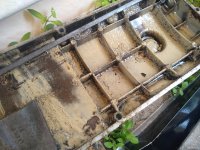Neoparoykos
Active Member
We are RUNNING! Not well, rough, but running!
I am embarrassed to admit that it was likely the plug sequence on the distributor cap. Despite everyone's recommendation to insure I got it right, I arrogantly and stupidly didn't confirm the sequence. I don't know what I was thinking. :\
Nevertheless, we are running. Very poor at this moment so a proper timing episode will be necessary. Maybe time to buy a timing light...
I am embarrassed to admit that it was likely the plug sequence on the distributor cap. Despite everyone's recommendation to insure I got it right, I arrogantly and stupidly didn't confirm the sequence. I don't know what I was thinking. :\
Nevertheless, we are running. Very poor at this moment so a proper timing episode will be necessary. Maybe time to buy a timing light...

